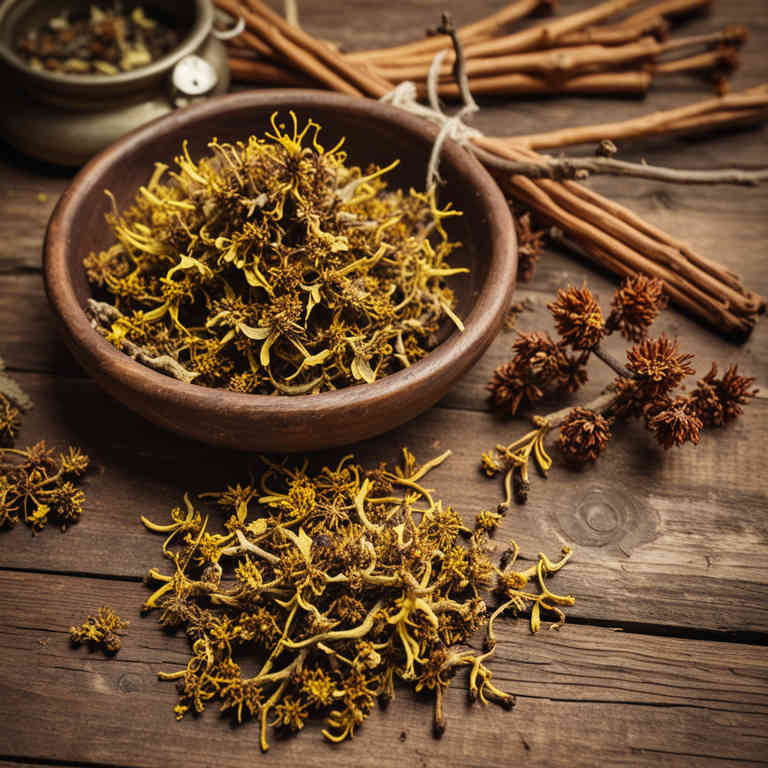Hamamelis virginiana decoction for medicinal use

Hamamelis virginiana decoction is a preparation made by boiling the bark of the witch hazel plant.
It is commonly used in herbal medicine for its astringent and anti-inflammatory properties. This decoction is often applied topically to treat skin conditions such as eczema, hemorrhoids, and minor wounds. It may also be used internally in small doses to help with digestive issues and heavy menstrual bleeding.
In herbalism, it is valued for its ability to reduce swelling and soothe irritated tissues.
Uses
Hamamelis virginiana decoction has been used to treat various skin conditions and inflammatory disorders for centuries.
Historically, Native American tribes utilized the bark of the witch hazel plant to soothe wounds, reduce inflammation, and relieve irritation. In traditional medicine, it was also employed to address digestive issues and as a mild astringent. Modern applications include its use in topical preparations for eczema, hemorrhoids, and minor skin irritations due to its anti-inflammatory and astringent properties.
Today, it is commonly found in over-the-counter remedies and is valued for its natural healing properties.
Benefits
Hamamelis virginiana decoction has health benefits such as reducing inflammation, soothing skin irritations, and promoting wound healing.
It is commonly used to treat conditions like hemorrhoids, eczema, and other inflammatory skin disorders due to its astringent and antiseptic properties. The decoction may also support urinary tract health by reducing irritation and inflammation. Its ability to constrict blood vessels makes it useful in managing excessive bleeding and varicose veins.
Overall, it is a valued herbal remedy in traditional medicine for its diverse therapeutic applications.
Constituents
Hamamelis virginiana decoction active constituents include tannins, flavonoids, and glycosides.
These compounds contribute to the decoction's astringent properties and its traditional use in treating skin conditions and inflammation. Tannins are responsible for the astringent effect, helping to reduce swelling and bleeding. Flavonoids provide antioxidant support, while glycosides may have anti-inflammatory and antimicrobial effects.
This herbal preparation is commonly used for its soothing and healing properties in topical applications.
Preparation
To make Hamamelis virginiana decoction, begin by gathering 1 to 2 tablespoons of dried Hamamelis virginiana (witch hazel) bark.
Place the bark in a pot and add about 2 cups of water. Bring the mixture to a gentle boil, then reduce the heat and let it simmer for 15 to 20 minutes. Strain the liquid through a fine mesh strainer or cheesecloth to remove the plant material.
Allow the decoction to cool slightly before using it topically or as directed by a healthcare provider.
Side Effects
Hamamelis virginiana decoction may lead to gastrointestinal discomfort, including nausea, vomiting, and diarrhea, due to its high concentrations of tannins.
It can also cause constipation or irritation of the stomach lining, especially if taken on an empty stomach. Prolonged use may lead to reduced iron absorption, potentially contributing to iron-deficiency anemia. In some cases, it may interact with medications, particularly those affecting the digestive system or blood pressure.
Individuals with kidney or liver disease should consult a healthcare provider before using this preparation, as it may place additional stress on these organs.